It looks like you're using an Ad Blocker.
Please white-list or disable AboveTopSecret.com in your ad-blocking tool.
Thank you.
Some features of ATS will be disabled while you continue to use an ad-blocker.
share:
a reply to: AnonymousWitness
Wow, bizarre.
The first pic definitely has the color of lava, same as I saw in Hawaii, however what does not make sense is no plumes. If this was lava, you would not even see the ocean with so much smoke.
Also green and yellow spots are peculiar, mixed in with the orange lava-colored spots.
Wow, bizarre.
The first pic definitely has the color of lava, same as I saw in Hawaii, however what does not make sense is no plumes. If this was lava, you would not even see the ocean with so much smoke.
Also green and yellow spots are peculiar, mixed in with the orange lava-colored spots.
The photographer/co-pilot has joined the discussion on the Dutch website.
I have translated some of the questions asked there and the answers given, and bundled them with some questions asked here that I forwarded him through email, to which he replied to me in Dutch. I was given permission to translate and post here. I take full responsibility for any loss of information in the process of translation.
Q:
A:
Q:
A:
Q:
A:
Q:
A:
I have translated some of the questions asked there and the answers given, and bundled them with some questions asked here that I forwarded him through email, to which he replied to me in Dutch. I was given permission to translate and post here. I take full responsibility for any loss of information in the process of translation.
We were flying Hongkong- Anchorage, and I fly this route about once a month. I often see fisher fleets around Taiwan and Japan, but the strange thing here was the color of the lights in the sea. It never is this deep red, with my little fishing knowledge I believe especially red is not effective for luring fish. That's why I think they usually use bright white yellow or green light.
I simply can't explain what we have witnessed. Further along the route there were some volcanos ready to burst and smoking already; hence we were alert for possible ash clouds and/or eruptions. That is what made us believe this could possibly be an eruption.
As for the sharpness; I have used a 10.5mm fisheye lens; with shutter speeds up to (about) 30 seconds and relatively 'quiet' air you can make pretty detailed photos. Because of the enormous angle (180') the stars barely move, and even with some shaking/movement of the plane it is pretty easy to have sharp photos.
With a little over a minute of shutter speed you will have the so called star trails, hence the high ISO so that with a shutter speed of about 30 seconds you will catch a fair amount of light and a sharp photo can be made.
These photos are NOT shopped or doctored, what you see is what you get.
I made around 20 photos of which these attract the most attention.
Q:
originally posted by: SirKonstantin
Still, the Strange Light Beam is What Throws Me Off. Are There Any More Information or Detail Pertaining to the Light Beam?
A:
The flash was about 25-30 minutes before we flew over this area, so very far away. It looked like a very powerful flash of lightning, only much shorter and much brighter. Also, it appeared that the flash was directed upward, as if a huge flash of lightning shot upwards from a big cloud.
Before and after no flashes were seen in the dark night, which is a bit odd in case of a thunderstorm. Also, it was strange that there was nothing to see on the weather radar later what could indicate a thunderstorm (although that is not conclusive (storms over the ocean are often less reflective than on land, thus sometimes can be difficult to be picked up by a weather radar onboard).
My captain and I (I am co-pilot) were both shocked and had not seen such strange flash before.
Q:
originally posted by: lovebeck
Air Traffic Control and an investigation into what happened in this remote region of the ocean is now started. Link to this "investigation"??
A:
I have direct contact with the Anchorage Air Route Traffic Control Center (ARTCC), and they read our reports and viewed the photos .
They were also unable to figure out the cause, and have forwarded the pictures and information to the American meteorological service and seismic service. What they do with it I don't know. But it is taken seriously, if only because there may be an ash cloud could hanging there.
Q:
You could observe that the light sources were at the ocean surface, or do you suppose?
A:
I suppose the lights were on the surface of the ocean, or at least very close. From the cockpit, you see fairly quickly, based on the movement, how far the objects are away from you. Given our altitude and speed the movement of these light sources seemed on the surface, just above or below it. Unfortunately, there was a layer of clouds (or steam?) that took away direct view.
Q:
What is your estimated size of the phenomenon?
A:
A large area; I estimate approximately 20nm x 15nm (roughly 32km x 28km). We had a wind of 80 knots coming from behind us; therefore, our final velocity was at around 580 knots relative to the ground.
originally posted by: Yeahkeepwatchingme
a reply to: nOraKat
Could the green be methane? Don't know why but I read that ignited methane burns green. Not certain.
Either way I think that's a huge volcano/methane burst.
Yes, I think you're right, it burns green.
a reply to: Rezlooper
Great thread and great input all 'round , well...
If an earthquake is down there , then couldn't all sorts of electro-magnetic things be happening , including intensifying the ' northern lights ' ? And other ' lightning ' effects ?
Could the earthquake have caused fissures in this unstable area and magma have ignited the huge amounts of liquid methane down there ?
If so . then pollutants from the magma could cause all sorts of flame colors...
Or has Russia fired up its 'HAARP ' in preparation for the coming world war ?
Hell . I don't know but great mystery - perfect for ATS . I think . S&F and thanks.
Great thread and great input all 'round , well...
If an earthquake is down there , then couldn't all sorts of electro-magnetic things be happening , including intensifying the ' northern lights ' ? And other ' lightning ' effects ?
Could the earthquake have caused fissures in this unstable area and magma have ignited the huge amounts of liquid methane down there ?
If so . then pollutants from the magma could cause all sorts of flame colors...
Or has Russia fired up its 'HAARP ' in preparation for the coming world war ?
Hell . I don't know but great mystery - perfect for ATS . I think . S&F and thanks.
A little late to the party but the first thing I thought of was shrimp boats. Even the pilot mentioned them in his account and he was in the area.
This is a picture from the ISS
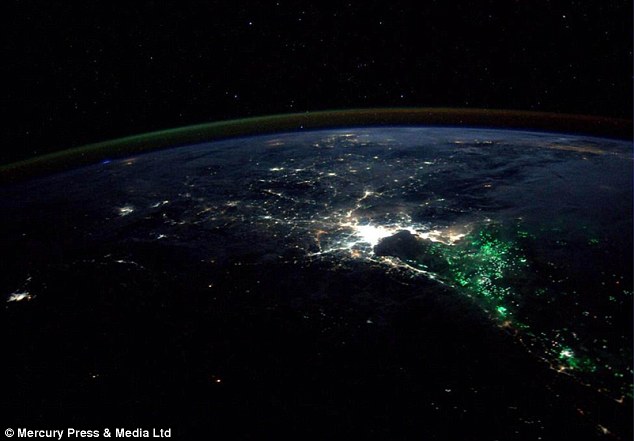
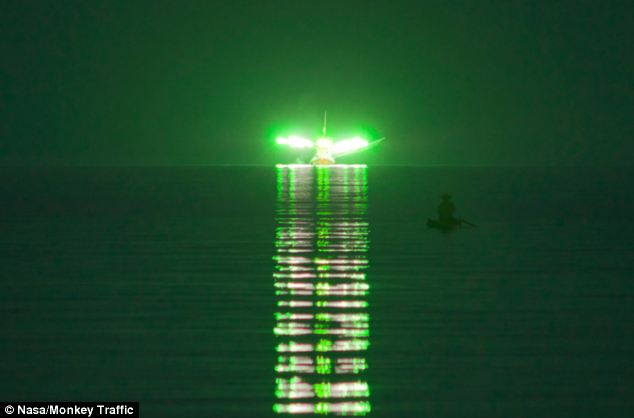
This is a picture from the ISS
The offshore illumination comes from enormous arrays of bright green LED lights used to attract squid and other sea life to the surface.
According to an October 2013 article on Nasa's Earth Observatory site by Michael Carlowicz: 'Fishermen from South America and Southeastern Asia light up the ocean with powerful lamps that attract the plankton and fish species that the squid feed on.
Read more: www.dailymail.co.uk... ishing-boats.html#ixzz3BTbPHR00
Follow us: @MailOnline on Twitter | DailyMail on Facebook


a reply to: AnonymousWitness
"Given our altitude and speed the movement of these light sources seemed on the surface, just above or below it."
Can he confirm whether the lights were moving or stationary?
"Given our altitude and speed the movement of these light sources seemed on the surface, just above or below it."
Can he confirm whether the lights were moving or stationary?
Really cool find! I just love it.
No time to read all the comments, but let me give you my explanation - underwater volcanoes.
If you look at the spot on Google earth
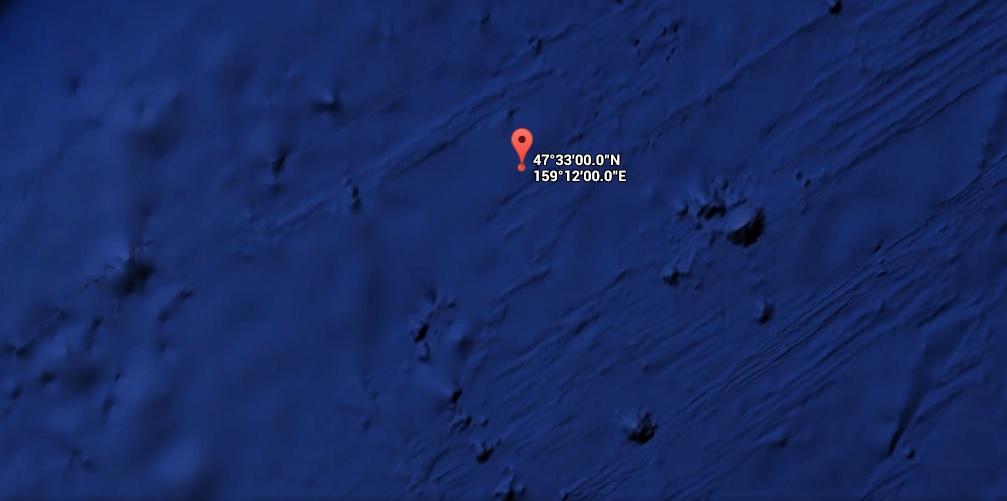
all the bumps around it resemble to me a volcano cones.
The red lights seen from above are most likely to be the lava glowing under water.. here some examples.
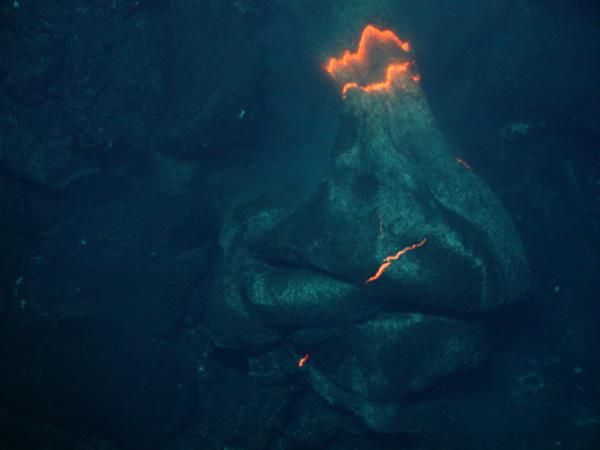
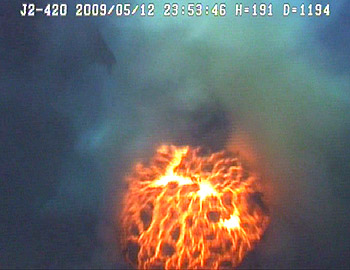
Well it looks like a massive eruption though. But the last days earthquake activities could trigger a process like this.
Anyway, this will stay a really cool misery for me.
No time to read all the comments, but let me give you my explanation - underwater volcanoes.
If you look at the spot on Google earth

all the bumps around it resemble to me a volcano cones.
The red lights seen from above are most likely to be the lava glowing under water.. here some examples.


Well it looks like a massive eruption though. But the last days earthquake activities could trigger a process like this.
Anyway, this will stay a really cool misery for me.
I'm assuming the Pilot or whoever took this pic didn't have a Tripod on hand. So for a free hand 8s long exposure this seems quite stable. I'm a
Photographer and I don't think that I could do this
Nice, odd that it is below the clouds. Some sort of party in the sky...
originally posted by: CitizenErased
Sadly, the EXIF data posted on the first page of this thread makes me doubt the legitimacy of these pictures. An 8-second exposure time on a camera is quite long. For those not aware of what exposure times do, here's some (unrelated) example photographs using an 8-second exposure time. photographerblog.org...
I will admit now that I'm not a photography expert, and I don't know how these pictures could have been created, I just know that an 8-second exposure is unusually long for a camera, especially when moving.
The column of light described, could that have been upper-atmospheric lightning? en.wikipedia.org...
You definitely don't understand how cameras work.
To steady the camera, you simply brace it against the window. The wide angle lens lessens the problem also, but MOST IMPORTANTLY, if you are looking down at 20° from horizontal at 34,000ft, your objects are 99,409ft away!! At a low angle the 30second exposure is perfectly fine.
Your example of 8secon exposures are for objects that are a mere 50ft away or so.
Anything on the surface of the ocean in these pictures is a MINIMUM 34,000ft away.
Look at the transparent co-pilot, none of these pictures are fake.
originally posted by: lovebeck
originally posted by: roadgravel
Quite sharp pictures for long exposures taken from an airplane.
As a photog, this is exactly what I was thinking. Some of them were 30 second exposures...How he managed that with no camera shake is beyond me. Notice he doesn't offer up any explanation, either.
Please see my above reply.
originally posted by: lovebeck
originally posted by: waverlyhills
This is a fascinating development. It's made all the more so by the fact that so far there does not appear to be a logical explanation. With all the strange developments taking place all over the world it seems as if we're gearing up for some strange days ahead.
Maybe the planet earth has just about enough of us all and is gearing up to put on a show. Is it a call to reshape our priorities? I can't say for certain but its quite interesting. Nice photography as well.
We are living in interesting times.
There's no logical explanation because there is no way someone could take a 30 second exposure, from a plane cruising at 34k feet, without major blurring and camera shake. Even if he somehow set up a tripod and took the shot, the plane IS STILL MOVING at how many MPH?
Those of us who know photography, heck even those who took it in high school, should be able to understand that this is just not possible. It's easy to put your photos on Pbase with some extraordinary story in order for them to go viral...
As far as the quality goes, he could have at least turned on the long exposure noise reduction for crying out loud.
While in high school did you also take trigonometry? It's pretty simple, at low angles there is almost no position change for distant objects. And the stars?? They are LIGHT YEARS away.
edit on 26-8-2014 by 8675309jenny because: (no reason given)
originally posted by: lovebeck
originally posted by: Outtis
a reply to: lovebeck
Go outside, tilt your head up at the night sky, walk a bit and tell me how much the stars move. Objects further in the distance seem to move with you. Now I'd imagine it would be pretty much like this in an airplane flying level at an altitude, so these images could just be possible even with the long exposure time, provided there was a tripod.
Also shooting in the dark requires the exposure to be long. If you look at the picture with the copilot visible, you can certainly see he moved about in the frame during the exposure. Also as the ground moves faster than the stars relative to the plane it would explain why the glowy bits in the sea appear more blurry than the stars in the sky.
Thanks for the (unneeded) photography lesson...Your comment "dark requires exposure to be long" is EXACTLY my point. There is NO way that a photo is going to come out like that, taken from an airplane, with a 30 second exposure. Most people that are serious about photography understand this. Also, if taking such a long exposure then why the need for such a high ISO?
Please understand that I do know what I am talking about. I've taken thousands of photos over the years. When I take long exposure photos I even use a remote to ensure there is no camera shake.
Btw, I don't need to go out and look at the night sky, thanks though. Your point makes no sense as THE PLANE IS MOVING. The camera would also be moving, there would be camera shake, etc. Even on a tripod, the plane is moving, so would the lights and there would be some star trails if, in fact, that was a 30 second exposure.
There is so much wrong with the photo, and the way it was supposedly taken, that there is no way this is legit.
Period.
No.
You don't understand what you're talking about. I'm sure you're a great photographer, but in this particular case you're wrong.
Learn geometry and trig.
I don't care if you're flying at fifty-five million parsecs per second, if the craft you are in is flying steady, then taking reasonably clear pictures of DISTANT objects at LOW ANGLES, ON APPROACH is going to be no problem.
You keep hanging on the 30sec exposure when he also snapped an 8sec and a 3sec.. The steeper the angle, the lower exposure time you need. Maybe you can't believe a 747 can fly so steady... have you ever been on one?
The only thing you've proved is you don't understand geometry
edit on 26-8-2014 by 8675309jenny because: edited to not be rude
LETS DO A QUICK MATHEMATICAL BREAKDOWN HERE:
747-8 has a cruise speed of 563knots (950.2 feet per second) (EDIT: pilot stated they had a tailwind so they were cruising at 580kts ground speed) (978.9 feet per second)
Picture 2 is an unknown distance away, but we have time stamps so we can determine the ground covered by the aircraft (negating wind velocity) between the two pictures.
Timestamp 1: 11:17:00
Timestamp 2: 11:22:18
5minutes and 18seconds have elapsed, or 318seconds. 318 * 978.9 = 311,290 ft (aka 58.9 miles!).
Now in image 2, the aircraft is NOT on top of the light formation since you can look down out the front window and see it. It appears they are looking down at roughly a 45° angle. A 45° at 34,000ft altitude would mean it's also 34,000ft in front of them (square right triangle).
So you can add the 34,000ft to the 311,290ft covered and you get 345,290ft (65.4miles!).
THIS MEANS IN THE FIRST IMAGE THE FORMATION IS OVER 65 MILES AWAY!!
A right triangle with bottom leg 345,290 and vertical leg 34,000 returns an upper angle of 84.4, meaning a 5.6° viewing angle below horizontal.
Now while traveling at 978.9 feet per second, during a 30second exposure you will cover 29,367ft.
We can easily figure out the viewing angle change to the object in the distance by subtracting that from the lower leg of the previous triangle and finding the new upper angle.
Our new triangle has lower leg 315,923ft and vertical remains at 34,000 (altitude), which gives us a new viewing angle of 6.15degrees below horizontal.
This equates to a 0.55° change in viewing angle over the 30second exposure time. In a 180°lens, this is .00305555 (or 0.3% variance).
Lovebeck, you just got DEBUNKED.
747-8 has a cruise speed of 563knots (950.2 feet per second) (EDIT: pilot stated they had a tailwind so they were cruising at 580kts ground speed) (978.9 feet per second)
Picture 2 is an unknown distance away, but we have time stamps so we can determine the ground covered by the aircraft (negating wind velocity) between the two pictures.
Timestamp 1: 11:17:00
Timestamp 2: 11:22:18
5minutes and 18seconds have elapsed, or 318seconds. 318 * 978.9 = 311,290 ft (aka 58.9 miles!).
Now in image 2, the aircraft is NOT on top of the light formation since you can look down out the front window and see it. It appears they are looking down at roughly a 45° angle. A 45° at 34,000ft altitude would mean it's also 34,000ft in front of them (square right triangle).
So you can add the 34,000ft to the 311,290ft covered and you get 345,290ft (65.4miles!).
THIS MEANS IN THE FIRST IMAGE THE FORMATION IS OVER 65 MILES AWAY!!
A right triangle with bottom leg 345,290 and vertical leg 34,000 returns an upper angle of 84.4, meaning a 5.6° viewing angle below horizontal.
Now while traveling at 978.9 feet per second, during a 30second exposure you will cover 29,367ft.
We can easily figure out the viewing angle change to the object in the distance by subtracting that from the lower leg of the previous triangle and finding the new upper angle.
Our new triangle has lower leg 315,923ft and vertical remains at 34,000 (altitude), which gives us a new viewing angle of 6.15degrees below horizontal.
This equates to a 0.55° change in viewing angle over the 30second exposure time. In a 180°lens, this is .00305555 (or 0.3% variance).
Lovebeck, you just got DEBUNKED.
edit on 26-8-2014 by 8675309jenny because: recalculated for 580kt groundspeed
With a little Photoshop enhancement on this photo you can clearly see the cockpit window frame.
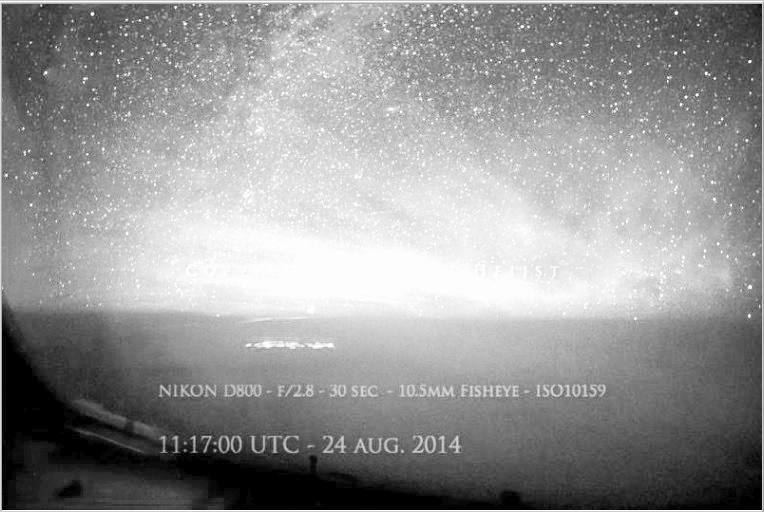

originally posted by: Hellas
I'm assuming the Pilot or whoever took this pic didn't have a Tripod on hand. So for a free hand 8s long exposure this seems quite stable. I'm a Photographer and I don't think that I could do this
People who own that camera likely have tripod(s) 2 feet away at all times.
a reply to: 8675309jenny
Great analysis... and that doesn't even account for the image stabilization/tracking algorithms which will handle that kind of variance with ease
Great analysis... and that doesn't even account for the image stabilization/tracking algorithms which will handle that kind of variance with ease
originally posted by: Halfswede
originally posted by: Hellas
I'm assuming the Pilot or whoever took this pic didn't have a Tripod on hand. So for a free hand 8s long exposure this seems quite stable. I'm a Photographer and I don't think that I could do this
People who own that camera likely have tripod(s) 2 feet away at all times.
What does that cam have anything to do with having a tripod on board??
edit on 26-8-2014 by Hellas because: (no reason given)
new topics
-
Cold Blooded Killers on Christmas!! GRRRRrrr!!
Pets: 2 hours ago -
Plane Crash Today --Azerbaijanian E190 passenger jet
Mainstream News: 7 hours ago -
Orange County Makes Shoplifting a Felony
Other Current Events: 11 hours ago
top topics
-
Orange County Makes Shoplifting a Felony
Other Current Events: 11 hours ago, 17 flags -
It's Offical Now
US Political Madness: 13 hours ago, 15 flags -
The reason it works is.....
General Chit Chat: 14 hours ago, 8 flags -
Dick Van Dyke saved from Wildfire by neighbours on his 99th birthday
People: 16 hours ago, 7 flags -
Plane Crash Today --Azerbaijanian E190 passenger jet
Mainstream News: 7 hours ago, 6 flags -
Cold Blooded Killers on Christmas!! GRRRRrrr!!
Pets: 2 hours ago, 5 flags
active topics
-
Statements of Intent from Incoming Trump Administration Members - 2025 to 2029.
2024 Elections • 52 • : WeMustCare -
-@TH3WH17ERABB17- -Q- ---TIME TO SHOW THE WORLD--- -Part- --44--
Dissecting Disinformation • 3811 • : 777Vader -
Cold Blooded Killers on Christmas!! GRRRRrrr!!
Pets • 5 • : rickymouse -
Plane Crash Today --Azerbaijanian E190 passenger jet
Mainstream News • 12 • : rickymouse -
It's Offical Now
US Political Madness • 15 • : Imhere -
Political Warfare & The Resister Special Forces Underground
Political Ideology • 2 • : NoCorruptionAllowed -
London Christmas Market BANS Word ‘Christmas’
Social Issues and Civil Unrest • 49 • : NorthOS -
Post A Funny (T&C Friendly) Pic Part IV: The LOL awakens!
General Chit Chat • 7956 • : KrustyKrab -
Drones everywhere in New Jersey ---and Elsewhere Master Thread
Aliens and UFOs • 229 • : yuppa -
DefCon Teetering on Escalation
World War Three • 49 • : ADVISOR
